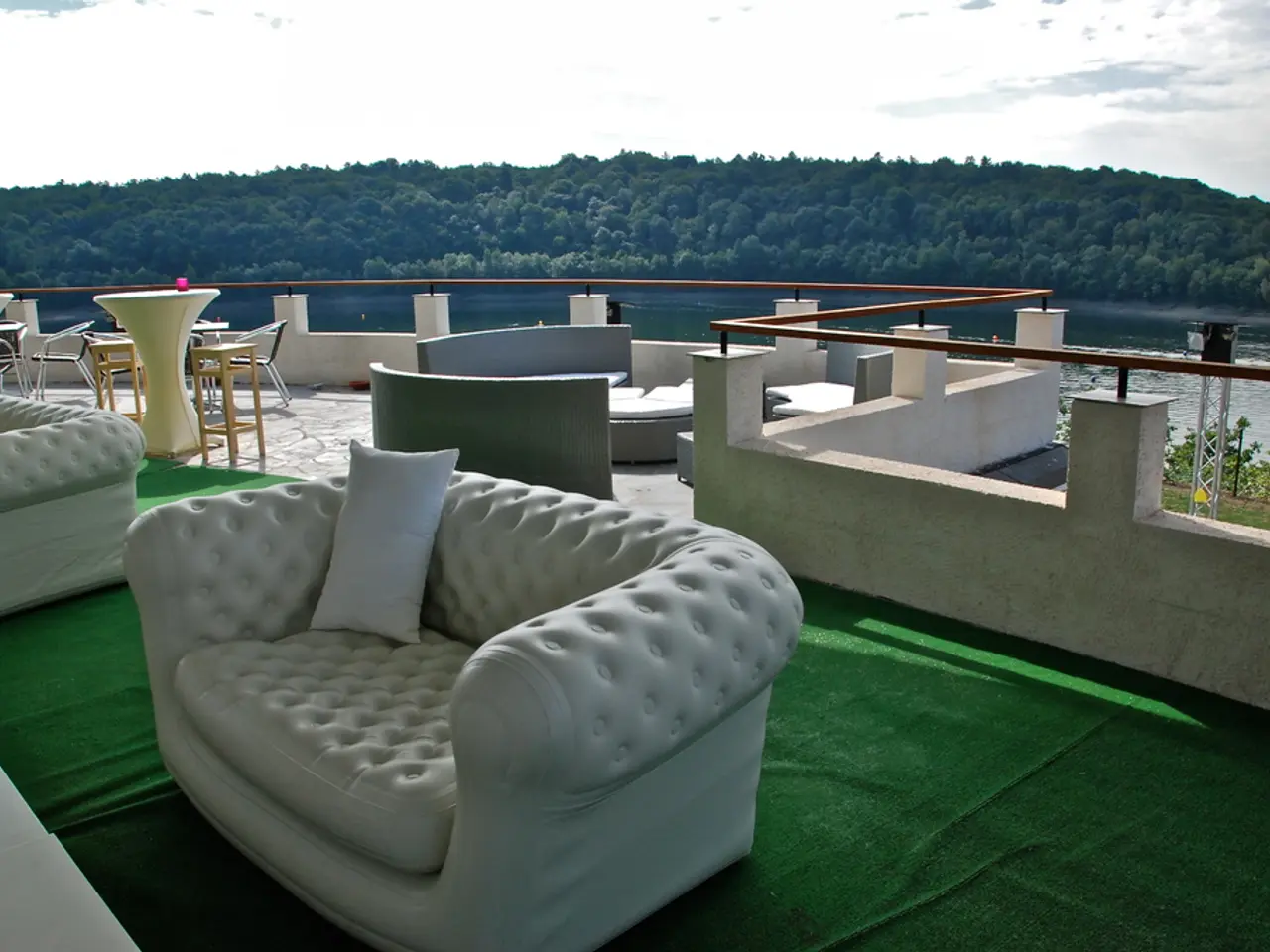Kitchen Sofa: A Possibility, Yet with Precautions – Fabrics and Design Trends Matter According to Interior Designers
In the heart of a modern kitchen, a sofa can bring an element of comfort and style, transforming the space into a social hub. But with the kitchen's unique environment, choosing the right upholstery is crucial.
Performance fabrics with advanced stain-resistant and bleach-cleanable finishes, and leather upholstery, provide the best balance of practicality, durability, and aesthetics for sofas placed in or near kitchens.
Francesco Pierazzi Architects, an award-winning design-led practice, emphasizes the importance of high-performance fabrics in a kitchen setting. Performance fabrics like Maharam’s Metaphor are highly recommended because they are durable, stain-resistant, and bleach-cleanable, making maintenance easier in a kitchen environment.
Leather is also a smart choice. Its timeless look, durability, and ease of cleaning make it an ideal fabric for kitchen sofas. White leather, in particular, can create a crisp, clean, and cohesive look, especially in open-plan kitchens.
Washable fabrics, including removable and machine-washable covers in options like chenille or other sturdy blends, offer practical benefits when spills or stains are frequent. These fabrics ensure that your kitchen sofa stays looking fresh and new, even with the occasional kitchen mishap.
However, velvet and other luxurious fabrics might be less suitable for kitchen sofas due to their sensitivity to stains and cleaning challenges.
When placing a sofa in or adjacent to the kitchen, it's important to ensure it doesn't interrupt the flow of movement or encroach on work zones. A low, close-to-the-ground seater is a good option as it's less likely to catch smoke and fumes compared to higher pieces.
In long and narrow kitchen layouts, pulling the sofa away from the wall can make the space feel more open and airy. A built-in, banquette-style sofa can work beautifully in smaller kitchens, ideally placed near a window or integrated into the kitchen island.
Good ventilation is crucial for a sofa in a kitchen. A quality extractor fan can help reduce odors and keep upholstery fresher for longer.
In open-plan rooms or larger spaces, a kitchen sofa can serve both aesthetic and practical purposes. It can create soft separation, helping visually distinguish the kitchen from the rest of the living space, and offer a spot to relax while food is being prepared.
Whether you opt for a corner sofa, a compact two-seater, or a modular seating solution, the key is to choose upholstery that can withstand the unique challenges of a kitchen environment while maintaining its style and elegance.
[1] Francesco Pierazzi Architects, "Kitchen Design," [website], [accessed 2022-03-30]. [2] Eliza Davey, interior designer at De Rosee Sa, personal communication, 2022-03-28. [3] Nicky Emlick, Head of Design at Sofa.com, personal communication, 2022-03-29. [4] Erin Williamson, founder of Erin Williamson Design, personal communication, 2022-03-29. [5] Maharam, "Metaphor," [website], [accessed 2022-03-30].
- Performance fabrics like Maharam’s Metaphor, with their durability, stain-resistance, and bleach-cleanability, are highly recommended for sofas placed in or near kitchens, making maintenance easier in a kitchen environment.
- Leather is also a smart choice for kitchen sofas due to its timeless look, durability, and ease of cleaning, with white leather creating a crisp, clean, and cohesive aesthetic, especially in open-plan kitchens.
- Washable fabrics, including removable and machine-washable covers, offer practical benefits in a kitchen setting, ensuring a kitchen sofa stays looking fresh and new despite frequent spills or stains.
- When placing a sofa in or adjacent to the kitchen, it's essential to consider factors such as maintaining the flow of movement, not encroaching on work zones, and ensuring good ventilation to keep upholstery fresher for longer.
- In larger open-plan spaces or rooms, a kitchen sofa can serve both aesthetic and practical purposes, creating soft separation and a spot to relax while food is being prepared, and offering a visual distinction between the kitchen and the rest of the living space.




